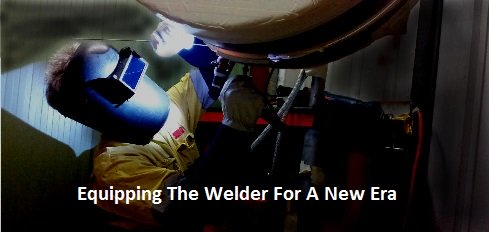| Back to Back Issues Page |
 |
|
The WelderDestiny Compass #025 - Base Metal Essential Variable June 21, 2017 |
Wednesday, June 21, 2017 / Perth Australia / By Niekie Jooste You can also read this e-zine on the WelderDestiny website by clicking here... 
Base Metal Essential Variable - Issue #025In this edition of "The WelderDestiny Compass":
Base Metal Type as Essential VariableToday we have the second of our series of articles relating to welding essential variables. We are tackling the "Base Metal Type" welding essential variable.Each type of metal has very distinct properties, including how they respond to welding. It therefore makes sense that the base metal would be an essential variable within the welding codes. A big problem is that the way in which materials are covered in material specifications and materials designation systems are not uniform. Some material designation systems are based purely on the chemical composition. Some are based on product type, such as pipe, casting or forging. Some are based on the end use of the material, such as pressure equipment, building structures or ships. It should therefore be clear that different welding codes that focus on different welding scopes will deal with the base metal essential variable in different ways. We will try to get a big picture view of why this variable has an effect on our welding procedures. If you would like to add your ideas to this week’s discussion, then please send me an e-mail with your ideas, (Send your e-mails to: compass@welderdestiny.com) or add a contribution directly into the comments form on the bottom of the e-zine page on the WelderDestiny website. Click here to add your contribution directly to the WelderDestiny website... Now let's get stuck into this week’s topics... Material Grouping in Welding CodesMost welding codes will group base metals. The idea being that if you have demonstrated that you can successfully weld one of the base metals in the group, then that will be good enough to assume that you will get similar results when welding the other metals in that group. This saves us from having to qualify hundreds of different welding procedures on base metals that are essentially the same, or similar.To achieve the outcome above, base metals are typically grouped on a combination of the following parameters:
As a general rule, the American codes, such as ASME IX, lists every material specification that is to be included in a group. In the case of ASME IX, these groups are termed "P" numbers. When impact properties are also specified, then an additional grouping is added. This is called the "group" number. The European codes tend to rather give the rules whereby different materials can be grouped. They also tend to give tables that show typical material groupings, but if you follow their rules, you can theoretically decide for yourself into which group the base metal falls. Many of the "EN" and "ISO" welding codes (such as ISO 15614) tend to reference ISO/TR 15608 for the "grouping rules". Interestingly, these material groupings are very much in line with the ASME P number grouping system, and is primarily based on chemical composition and strength factors. Chemical Composition GroupingThe broadest range of grouping in chemical composition will be based on the particular "alloy system" that is being welded. Typical alloy systems are:
While it looks like there is a 1:1 correlation between ASME IX and ISO/TR 15608, this is not necessarily the case. There are some notable differences, especially in the case of the high alloy content Nickel Chrome alloys. Thermo-Mechanical TreatmentsA metal's final properties can be changed significantly by heat treatments (thermal treatments) such as:
There are many more thermal treatments, but those mentioned above are sufficient for our present discussion. It should be clear that a material that has enhanced properties due to a quenched and tempered thermal treatment will respond differently to welding than a material that was subjected to a precipitation hardening thermal treatment. For this reason, materials that have different thermal treatments are typically placed in different groups, or sub-groups, within the welding codes. A metal's final properties can also be modified by mechanical treatments such as:
Welding will generally result in a recrystallization of a cold worked material in the heat affected zone (HAZ) of the base metal. For this reason, materials with different mechanical treatments are placed in different material groupings or sub-groupings within the welding codes. I hope this discussion has wet your appetite to explore the metallurgy aspects of welding further. If you are interested in a more in-depth discussion on this topic, click here to explore it on the WelderDestiny website...
Niekie Jooste P.S. Do you have a question on how certain codes deal with material grouping? Do you have an interesting insight into how materials respond during welding? Please share your stories, insights and questions regarding today's topics directly on the e-zine page on the WelderDestiny website. Click here to add your contribution directly to the WelderDestiny website... P.P.S If you know anybody that you believe could benefit from The WelderDestiny Compass, please forward it to them. If this e-zine was forwarded to you, and you are interested in receiving our future editions, please visit the WelderDestiny.com website and enter your e-mail details into the subscription box. It is a big red box on the home page, so you can't really miss it. - I hope! Click here for the best version of The WelderDestiny Compass back-issues... |
| Back to Back Issues Page |